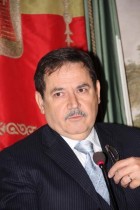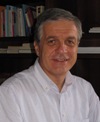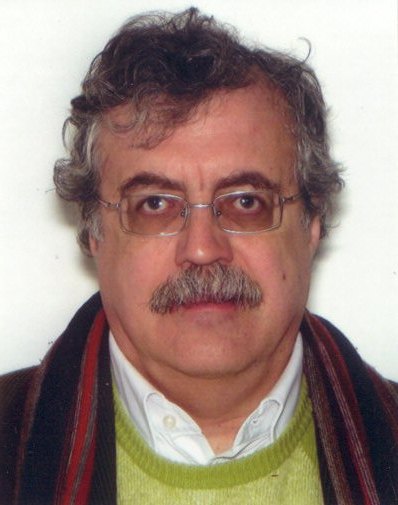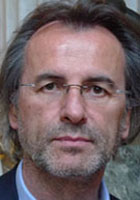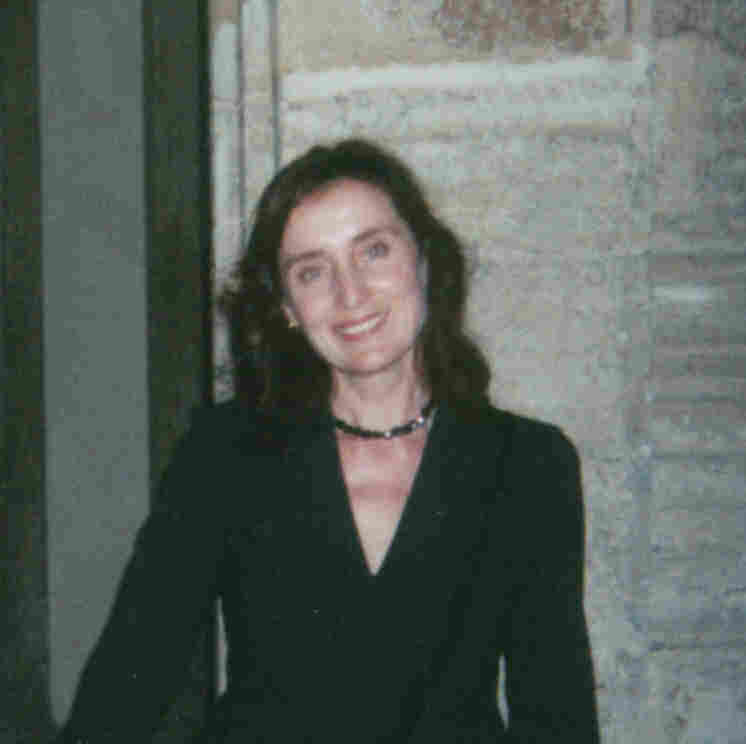Studying at the University of Verona
Here you can find information on the organisational aspects of the Programme, lecture timetables, learning activities and useful contact details for your time at the University, from enrolment to graduation.
Academic calendar
The academic calendar shows the deadlines and scheduled events that are relevant to students, teaching and technical-administrative staff of the University. Public holidays and University closures are also indicated. The academic year normally begins on 1 October each year and ends on 30 September of the following year.
Course calendar
The Academic Calendar sets out the degree programme lecture and exam timetables, as well as the relevant university closure dates..
| Period | From | To |
|---|---|---|
| Sem. 1A | Oct 4, 2010 | Nov 14, 2010 |
| Sem. 1B | Nov 15, 2010 | Jan 16, 2011 |
| Sem. 2A | Feb 21, 2011 | Apr 10, 2011 |
| Sem. 2B | Apr 11, 2011 | Jun 5, 2011 |
| Session | From | To |
|---|---|---|
| Sessione invernale (A.A. 2009-2010) | Jan 17, 2011 | Feb 20, 2011 |
| Sessione estiva (esami sospesi dal 5 all'8 luglio) | Jun 6, 2011 | Jul 31, 2011 |
| Sessione autunnale | Sep 1, 2011 | Sep 30, 2011 |
| Session | From | To |
|---|---|---|
| Sessione estiva | Jul 5, 2011 | Jul 7, 2011 |
| Sessione autunnale | Nov 15, 2011 | Nov 17, 2011 |
| Sessione invernale | Mar 13, 2012 | Mar 15, 2012 |
| Period | From | To |
|---|---|---|
| All Saints | Nov 1, 2010 | Nov 1, 2010 |
| National holiday | Dec 8, 2010 | Dec 8, 2010 |
| Christmas holidays | Dec 22, 2010 | Jan 6, 2011 |
| Easter holidays | Apr 22, 2011 | Apr 26, 2011 |
| National holiday | Apr 25, 2011 | Apr 25, 2011 |
| Festa dei lavoratori | May 1, 2011 | May 1, 2011 |
| Local holiday | May 21, 2011 | May 21, 2011 |
| National holiday | Jun 2, 2011 | Jun 2, 2011 |
| Summer holidays | Aug 8, 2011 | Aug 15, 2011 |
Exam calendar
Exam dates and rounds are managed by the relevant Humanistic Studies Teaching and Student Services Unit.
To view all the exam sessions available, please use the Exam dashboard on ESSE3.
If you forgot your login details or have problems logging in, please contact the relevant IT HelpDesk, or check the login details recovery web page.
Should you have any doubts or questions, please check the Enrollment FAQs
Academic staff
 mario.dalcorso@univr.it
mario.dalcorso@univr.it
Livieri Paolo
 paolo.livieri@univr.it
paolo.livieri@univr.it
 annamaria.piussi@univr.it
annamaria.piussi@univr.it
 rita.severi@univr.it
rita.severi@univr.it
Study Plan
The Study Plan includes all modules, teaching and learning activities that each student will need to undertake during their time at the University.
Please select your Study Plan based on your enrollment year.
1° Year
| Modules | Credits | TAF | SSD |
|---|
Un insegnamento a scelta tra i seguenti2° Year activated in the A.Y. 2011/2012
| Modules | Credits | TAF | SSD |
|---|
| Modules | Credits | TAF | SSD |
|---|
Un insegnamento a scelta tra i seguenti| Modules | Credits | TAF | SSD |
|---|
Legend | Type of training activity (TTA)
TAF (Type of Educational Activity) All courses and activities are classified into different types of educational activities, indicated by a letter.
Psychology of Art and Creative Processes (2010/2011)
Teaching code
4S00822
Teacher
Coordinator
Credits
9
Also offered in courses:
- Psychology of Art and Creative Processes of the course Specialized Degree in Educational Science
Language
Italian
Scientific Disciplinary Sector (SSD)
M-PSI/01 - GENERAL PSYCHOLOGY
Period
Sem. 2A, Sem. 2B
Learning outcomes
Many parallels between art and the teaching methods used in art have been suggested in the last few years. One aspect of these is the recognition of the relevance of the cognitive processes underlying the creative processes. Students will be given the opportunity to acquire the basic knowledge to assist in the development of artistic abilities. Instruments and methods developed in the field of Psychology of Art are used within the perspective of Experimental Phenomenology.
Program
The first issue addressed during the course will be to establish the place of Psychology of Art within the field of contemporary Cognitive Sciences. A second important issue will be the study of “affordances”, focusing on the relevance of this to the origins of Psychogy itself. Language will be dealt with in terms of its function of translating into words the art object. The development of aesthetics will be discussed from its origin to the experimental version, comparing it to Gibson’s ecological approach to the study of perception and of pictorial representation.
Examination Methods
Students will have the opportunity to establish a specific bibliography with the teacher, based on their personal interests in the discipline. What follows is a list of recommended texts (without excluding the study of other books on similar topics):
Argenton A., Arte e cognizione, Milano, Cortina, 1996.
Arnheim R., Per la salvezza dell’arte, Milano, Feltrinelli, 1994.
Arnheim R., Arte e percezione visiva Milano, Feltrinelli. 1978.
Benedetti C., L’ombra lunga dell’autore, Milano, Feltrinelli, 1999.
Bodei R., Le forme del bello, Bologna, Bologna, il Mulino, 1995.
Ferrarsi M., L’immaginazione, Bologna, il Mulino, 1996.
Gibson J. J., Un approccio ecologico alla percezione visiva, Bologna, il Mulino, 1999.
Gombrich E.H., Arte e illusione, Torino, Einaudi, 1966.
Goodman N., La scienza dell’arte, Firenze, Giunti, 1990.
Kemp M., La scienza dell’arte, Firenze, Giunti, 1990.
Kemp M., Immagine e verità, Milano, Il Saggiatore, 1999.
Kennedy J. M., La percezione pittorica, Padova, Cortina, 1988.
Kubovy M., La freccia nell’occhio, Padova, Muzzio, 1978.
Maffei L., Fiorentini A., Arte e cervello, Bologna, Zanichelli 1995.
Massironi M., L’osteria dei dadi truccati. Arte, Psicologia e dintorni, Bologna, il Mulino, 2000.
Pizzo Russo L., Che cos’è la psicologia dell’arte, Palermo, Aesthetica, 1991.
Evaluation methods:
Oral discussion on the text chosen by the student in agreement with the teacher.
The students may decide to discuss a written essay on a topic (and a bibliography) as agreed with the teacher.
Type D and Type F activities
Modules not yet included
Career prospects
Module/Programme news
News for students
There you will find information, resources and services useful during your time at the University (Student’s exam record, your study plan on ESSE3, Distance Learning courses, university email account, office forms, administrative procedures, etc.). You can log into MyUnivr with your GIA login details: only in this way will you be able to receive notification of all the notices from your teachers and your secretariat via email and soon also via the Univr app.
Student mentoring
Graduation
Documents
| Title | Info File |
|---|---|
|
|
pdf, it, 99 KB, 13/10/23 |
|
|
pdf, it, 101 KB, 10/04/24 |
List of theses and work experience proposals
| theses proposals | Research area |
|---|---|
| Psicoanalisi | Psychology - Psychology, Psychoanalysis |
Gestione carriere
Linguistic training CLA
Practical information for students
Documents
| Title | Info File |
|---|---|
|
|
pdf, it, 325 KB, 02/05/23 |
|
|
pdf, it, 212 KB, 02/05/23 |
|
|
pdf, it, 131 KB, 02/05/23 |
Stage e Tirocini
Per le altre attività formative (crediti F) sono previsti 9 cfu (pari a 225 ore) da acquisire solamente attraverso l’attività di tirocinio obbligatoria, a sua volta suddivisa in:
- tirocinio indiretto (1 cfu: 25 ore di frequenza obbligatoria in università per il 75%) in preparazione dell’attività formativa sul campo;
- tirocinio diretto (8 cfu), da svolgersi presso enti convenzionati.
L’ordinamento didattico della LM in Scienze pedagogiche prevede che il tirocinio indiretto a frequenza obbligatoria si svolga in università per il 75% nel secondo anno (1 CFU: 25 ore).
Il tirocinio indiretto consiste in un accompagnamento iniziale delle/degli studenti da parte dei tutor attraverso un percorso di formazione della durata di 25 ore.
La finalità di questo percorso è quella di preparare le/gli studenti alla particolare forma di apprendimento costituita dal tirocinio, dotandoli di conoscenze e strumenti adeguati a osservare, comprendere e rielaborare criticamente l’esperienza di tirocinio nei servizi educativi e ad affrontare il tirocinio negli enti con metodo e consapevolezza.
Il percorso, da attuare in gruppi da 20-25 persone sotto la supervisione di un tutor proveniente dal mondo professionale di educatori e pedagogisti, risponde alle esigenze costantemente espresse sia dalle/dagli studenti stessi sia dalle parti sociali che dai referenti degli enti convenzionati.
Nuove Linee Guida per il tirocinio di Scienze pedagogiche.
- Tutte le informazioni in merito agli stage per futuri studenti sono disponibili alla pagina Stage e tirocini.
- Tutte le informazioni in merito agli stage per studenti iscritti sono pubblicate in MyUnivr - come fare per - stage e tirocini.
- Tutte le informazioni in merito agli stage per le aziende sono disponili alla pagina Stage e tirocini per azienze.
 045 8028727
045 8028727

